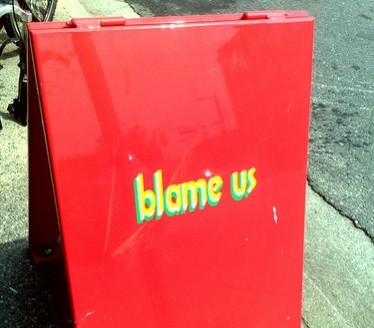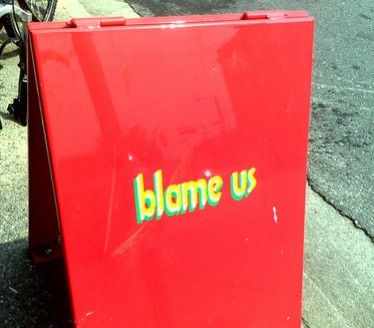 Photo: rolandFirst up, the climate talks are not going very well. After a rousing start in Rio in 1992, from which we returned with the UN Framework Convention on Climate Change, the negotiations have been anything but inspiring. 1997’s Kyoto Protocol defined the rich-world actions – the first steps – that would put meat on the Convention’s bones, but the details were not ideal, and after Kyoto, well, let’s just say that things didn’t quite work out as hoped. And now, twelve years on, Copenhagen is rising on the horizon. In fact, we’re almost there.
Photo: rolandFirst up, the climate talks are not going very well. After a rousing start in Rio in 1992, from which we returned with the UN Framework Convention on Climate Change, the negotiations have been anything but inspiring. 1997’s Kyoto Protocol defined the rich-world actions – the first steps – that would put meat on the Convention’s bones, but the details were not ideal, and after Kyoto, well, let’s just say that things didn’t quite work out as hoped. And now, twelve years on, Copenhagen is rising on the horizon. In fact, we’re almost there.
Unfortunately, judging from the preparatory talks that just ended in Bonn, the guarded progress of the last few years is still pretty provisional. Team Obama has, to be sure, brought a friendlier, more constructive atmosphere to the talks, and the policy wrangle – on topics from adaptation to funding mechanisms to avoided deforestation to technology transfer – has become infinitely more detailed and pragmatic. But this, alas, does not guarantee that substantive progress is on the horizon. Because, when it comes to the core dispute – how, in this riven and tumultuous world, can we possibly contrive the rapid and extremely deep global emissions cuts that we so clearly need? – the negotiations remain solidly deadlocked. And unless this deadlock is broken, the result just might be truly, resonantly, catastrophic.
Were I a UN diplomat, I would give all this a guardedly optimistic spin. But let me say, instead, that the North’s recent positions have been utterly inadequate to the scale of the climate challenge, and that, in this context, the North / South deadlock may actually be deepening. There is, obviously, a lot to say about all this, but the bottom line is simple enough: Bonn was widely expected to make major progress on defining the emission reduction targets that the industrialized “Annex 1” countries would take in the all important “second commitment period” of the evolving climate accord. But things didn’t work out that way. Instead, Bonn marked the dawning recognition that, despite a background of rising panic among the scientists, there will be no top-down process in which, first, Annex 1 adopts a shared, scientifically and ethically defensible target, and, second, individual national targets (like, say, the US target) are negotiated within the Annex 1 “bubble.” Instead, there will be a bottom-up process in which each Annex 1 country does what it can, as it will, and both the climate system and the developing world will be left to adapt as best they can.
Better than nothing, sure. But as the team at Climate Analytics just noted in Nature Reports, it doesn’t even put us close to being on track for success in Copenhagen. Which is to say that an aggregated analysis of Annex 1 commitments, which “would be in the range of 8-14 per cent below 1990 levels by 2020 if current commitments were followed through,” combined with comparable non-Annex 1 “deviations from baseline,” here assumed to be 4% by 2020, yields the conclusion that we have virtually “no chance of limiting warming to 2°C (or 1.5 °C) above pre-industrial temperatures.”
In other words, if anyone thought that Copenhagen was going a chart a direct course to climate safety, they’re going to be sorely disappointed. Moreover, disappointment may be the least of our problems. With the North being “realistic” about what it can and cannot be expected to do, the South is facing the brutal reality of the situation, which is that the “atmospheric space” is now gone. And that the global climate budget is going to be even further overdrawn by the time that Annex 1 emissions have dropped substantially. In this context, it is essentially impossible to overstate the pressure that is going to come down on the developing world. Which is, in turn, to say that, barring both bravery and surprise, December’s Copenhagen showdown could end very badly indeed.
So, consider a straightforward if not simple question: if Copenhagen explodes, or deadlocks, or produces only a face-saving agreement that offers far, far too little, just whose fault will it be?
This question has been in the air for decades, but Bonn brought it into new prominence, by way of a dramatic technical briefing that took place on June 4th. How could a technical briefing be dramatic? In this case by kicking off a coordinated campaign on the part of the South’s negotiators, one in which the subject of the industrialized world’s historical responsibility for the climate crisis was put squarely front and center. The briefing featured Martin Khor, formerly of the Third World Network and now of the South Center, as well as an impressive lineup of senior negotiators from China, India, Bolivia, and Brazil. And it was followed, just days later, by a procession in which these same countries, among a total of 37, lent their names to a once marginal call (the Climate Action Network International paved the way at the last inter-sessional with this position paper) for the industrialized countries to reduce their combined emissions by over 40% by 2020.
It’s easy to dismiss gambits like this as mere tactical posturing. Such dismissals are routine, even habitual, among northern negotiators (and activists!), and they generally come packaged together with the further claim that reductions of this scale are “impossible,” and that calls for them are either “dangerous,” or, more diplomatically, “unhelpful.” Unfortunately (and I’m not being glib here; it is truly unfortunate) the science demands reductions of at least this scale. Also unfortunately, “historical responsibility” and “climate debt” are not mere rhetoric, but reasonable framings rooted in solid quantitative analyses that indicate that developing countries are quite justified in their fear that stringent global climate targets will, all else being equal, plunge them into permanent poverty traps. This is big stuff, and to understand the quiet drama that just unfolded in Bonn, you have to take it seriously, and then understand just how distressing it was to see the historical responsibility issue finally come to a head against the background of the northern temporizing noted above, in which Annex 1 chose to stand for a set of weak commitments that, even taken together, are utterly inadequate to the scale of the challenge.
And now the recriminations are beginning. So far, they are more often voiced than written, but with the pressure rising, this will change. The notable point is that, faced with southern demands for a Copenhagen Accord that takes historical responsibility (as above) and capacity (as in South Africa’s call for a Greenhouse Development Rights-style responsibility and capacity approach) into account, the northern impulse seems to be to blame the South for unwisely upping the stakes. It’s almost as if, by insisting on developmental equity, the South comes to share an equal measure of blame for the international impasse. As in this comment from (Australia) The Age: “Meanwhile, in Bonn, at talks supposed to ease the way to a hallelujah moment at the Copenhagen climate summit in December, they’re bogged in the rich-versus-poor quagmire of who bears the cost.” Or, even worse, this one from Nick Mabey, the CEO of the small but influential Third Generation Environmentalism: “The debate over ‘historical responsibility’ has clouded focus and undermined the fragile trust between countries that climate change is a common problem that all must commit to solving.”
And perhaps it has. But perhaps, too, there is more to say. Because while we’re clearly in this together, Mabey’s formulation posits a symmetry of obligation that simply makes no sense, not at least in this world, where the historically high-emitting countries are also, and not at all accidentally, the rich ones. To be sure, he is calling for greater moral seriousness, from all sides, and such would be welcome indeed. But why would reasoned calls for historical responsibility be in any way contrary to such seriousness? Is it not rather that, by facing our common but sharply differentiated histories, we can hope to understand our real circumstances, and our duties within the coming crisis?
It is true, of course, that if the equity debate degenerates into a “blame game,” we all lose. But this is hardly the only option on the table. The other is that the industrialized world could straightforwardly offer a defensible measure of justice – Annex 1 emissions reduction targets that are in at least approximate proportion to its responsibility and capacity, and a finance and technology “support package” that is not an overt insult to the developing world.
Instead, in Bonn, we saw Annex 1 countries assert emissions reduction targets that look good by the suicidal standards of the past, but entirely inadequate by the standards of the future. Are we to understand their predicaments, and the political difficulties of doing better? Obviously, we are; we have no choice but to do so. But let’s let us not confuse understanding with acceptance, or with apology. And let us, please, diligently follow along when our friends in the South do their own calculations.
Because the way things are going, the road to Copenhagen is likely to get downright ugly. And when it ends, on those expensive Danish shores, it may well be with a train wreck. If this does, then don’t forget the blame game, because it will be loud, bitter, and prime-time. It goes without saying that, to the extent that rich-world enviros choose to play by blaming China, and the climate-equity movement, and the developing world in general, they will only deepen the confusion.



